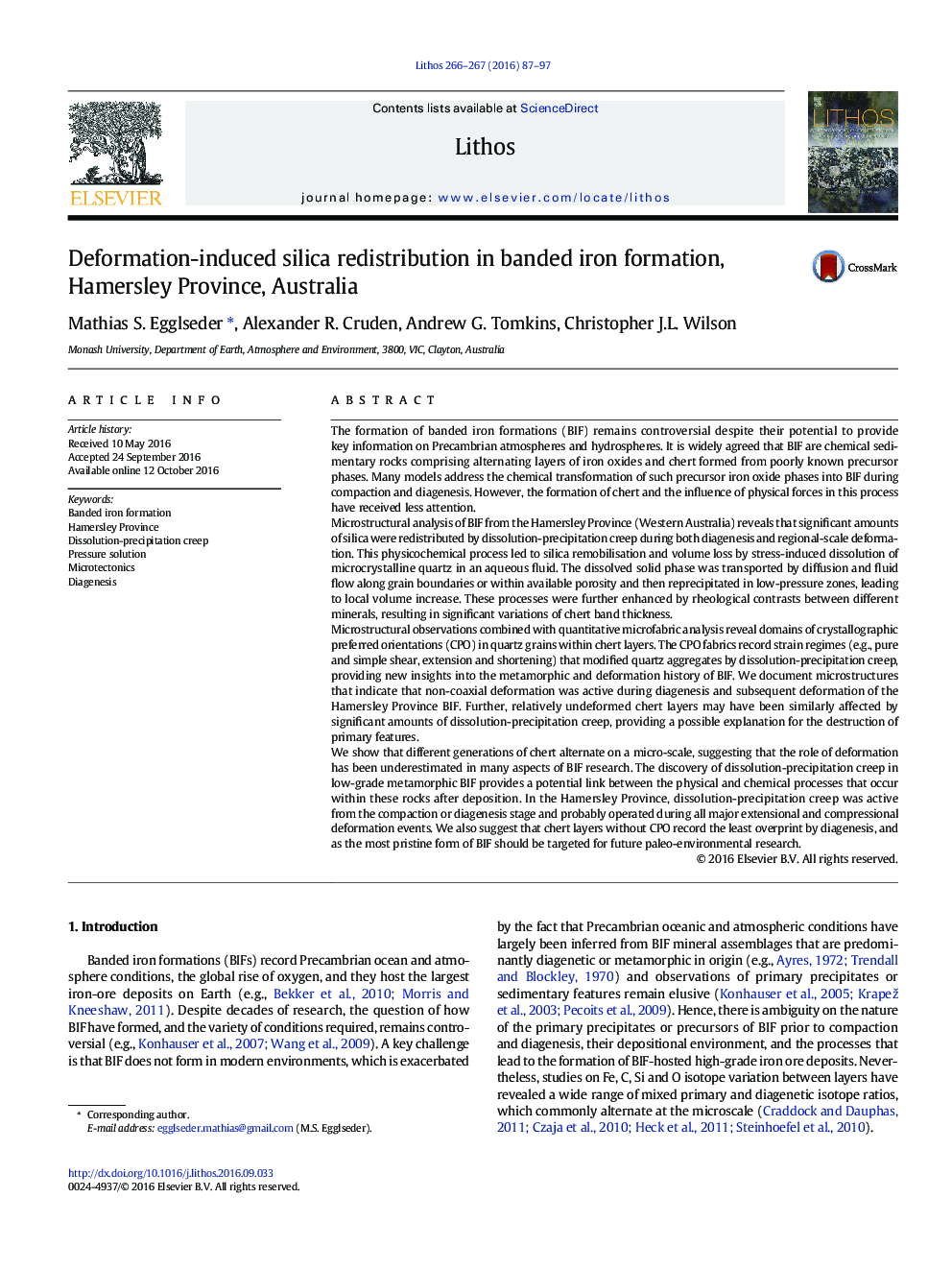| کد مقاله | کد نشریه | سال انتشار | مقاله انگلیسی | نسخه تمام متن |
|---|---|---|---|---|
| 4715451 | 1638638 | 2016 | 11 صفحه PDF | دانلود رایگان |
• Quartz in banded iron formations shows different crystallographic preferred orientations.
• Chert deformation leads to dissolution-precipitation creep and silica redistribution.
• Crystallographic orientations of quartz give evidence about the paleo-strain regime.
• A new method is proposed to differentiate between pristine versus diagenetic chert layers.
The formation of banded iron formations (BIF) remains controversial despite their potential to provide key information on Precambrian atmospheres and hydrospheres. It is widely agreed that BIF are chemical sedimentary rocks comprising alternating layers of iron oxides and chert formed from poorly known precursor phases. Many models address the chemical transformation of such precursor iron oxide phases into BIF during compaction and diagenesis. However, the formation of chert and the influence of physical forces in this process have received less attention.Microstructural analysis of BIF from the Hamersley Province (Western Australia) reveals that significant amounts of silica were redistributed by dissolution-precipitation creep during both diagenesis and regional-scale deformation. This physicochemical process led to silica remobilisation and volume loss by stress-induced dissolution of microcrystalline quartz in an aqueous fluid. The dissolved solid phase was transported by diffusion and fluid flow along grain boundaries or within available porosity and then reprecipitated in low-pressure zones, leading to local volume increase. These processes were further enhanced by rheological contrasts between different minerals, resulting in significant variations of chert band thickness.Microstructural observations combined with quantitative microfabric analysis reveal domains of crystallographic preferred orientations (CPO) in quartz grains within chert layers. The CPO fabrics record strain regimes (e.g., pure and simple shear, extension and shortening) that modified quartz aggregates by dissolution-precipitation creep, providing new insights into the metamorphic and deformation history of BIF. We document microstructures that indicate that non-coaxial deformation was active during diagenesis and subsequent deformation of the Hamersley Province BIF. Further, relatively undeformed chert layers may have been similarly affected by significant amounts of dissolution-precipitation creep, providing a possible explanation for the destruction of primary features.We show that different generations of chert alternate on a micro-scale, suggesting that the role of deformation has been underestimated in many aspects of BIF research. The discovery of dissolution-precipitation creep in low-grade metamorphic BIF provides a potential link between the physical and chemical processes that occur within these rocks after deposition. In the Hamersley Province, dissolution-precipitation creep was active from the compaction or diagenesis stage and probably operated during all major extensional and compressional deformation events. We also suggest that chert layers without CPO record the least overprint by diagenesis, and as the most pristine form of BIF should be targeted for future paleo-environmental research.
Journal: Lithos - Volumes 266–267, December 2016, Pages 87–97
